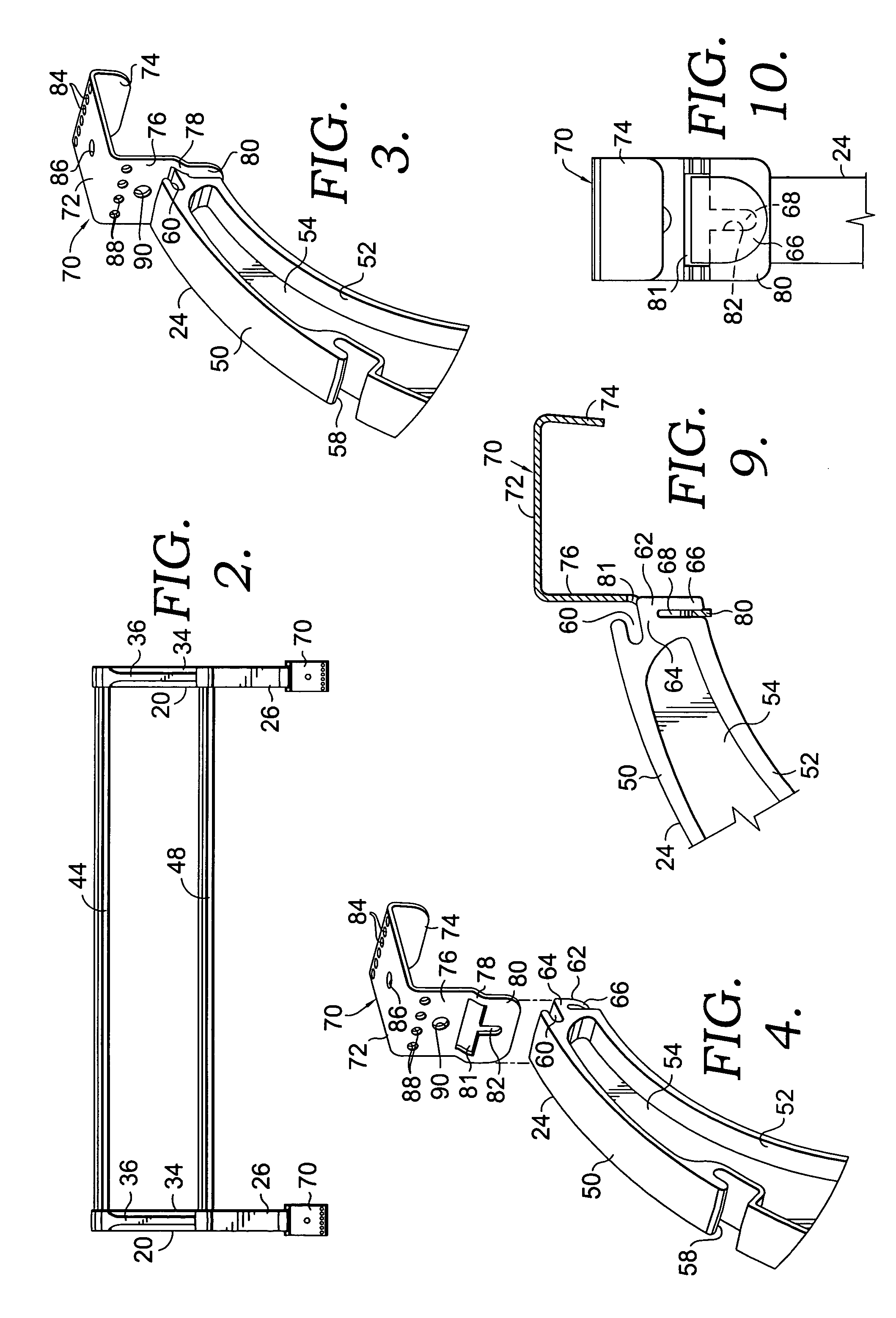Hanging shoe rack with improved structural features
a shoe rack and structural feature technology, applied in the field of shoe racks, can solve the problems of adding to the cost, adding material cost, adding molding cost, etc., and achieve the effect of reducing the mold cycle time, saving costs and less material
- Summary
- Abstract
- Description
- Claims
- Application Information
AI Technical Summary
Benefits of technology
Problems solved by technology
Method used
Image
Examples
Embodiment Construction
[0025]Referring now to the drawings in more detail and initially to FIG. 1 in particular, numeral 10 generally designates a hanging shoe rack constructed according to a preferred embodiment of the present invention. A shoe rack 10 include an upper section 12, an intermediate section 14 immediately below the upper section 12, and a bottom section 16 located immediately below the intermediate section 14. It should be understood that three sections are shown only by way of example and that the shoe rack can be constructed using a different number of sections.
[0026]Each of the sections 12, 14 and 16 may have the same construction and includes a frame having opposite parallel sides 18 that may be identical to one another. Each frame side 18 is provided with a plurality of spaced apart arms 20 which extend in a slightly curved configuration outwardly from the frame side or in a direction away from a vertical surface on which the shoe rack 10 is mounted (such as on a wall or other surface ...
PUM
 Login to View More
Login to View More Abstract
Description
Claims
Application Information
 Login to View More
Login to View More - R&D
- Intellectual Property
- Life Sciences
- Materials
- Tech Scout
- Unparalleled Data Quality
- Higher Quality Content
- 60% Fewer Hallucinations
Browse by: Latest US Patents, China's latest patents, Technical Efficacy Thesaurus, Application Domain, Technology Topic, Popular Technical Reports.
© 2025 PatSnap. All rights reserved.Legal|Privacy policy|Modern Slavery Act Transparency Statement|Sitemap|About US| Contact US: help@patsnap.com



